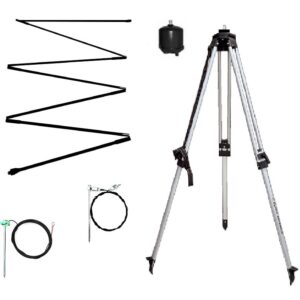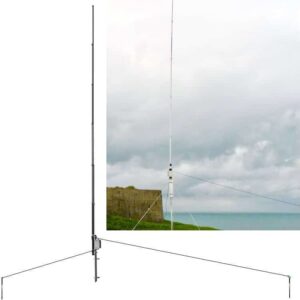Dipole antenna vs OCF Dipole antennas

Signal loss for an OCF or standard Dipole antenna is height dependent.
ANTENNA HEIGHT for MINIMUM LOSS
Alpha incorporates an OCF dipole antenna design into its systems. This enables the antennas to be directional even when deployed just 6 feet off the ground. This enhances DX results in the direction that your signal is launched. If your target is NVIS, then a low mounted dipole can perform well.
What does it take for a dipole antenna to have minimum loss and perform optimally for DX? It must have high placement at least 1/4 of a wavelength high. For example, an 80-meter dipole should be installed just above 65 feet to avoid ground loss.
DIRECTIONALITY
Having a Null from an OCF dipole can be a bonus when nulling out noise sources. Just position the null of the signal pattern towards the noise source. A standard dipole on the other hand would have a very difficult time nulling out noise sources.
DIPOLE ANTENNA BALUN
The impedance of a dipole is about 72 ohms, which requires a lossy balun to change it to 50 ohms for your radio’s input. The exception to this rule is when a dipole’s elements are angled more closely together. This is why the HexTenna dipole design is superior to most any other option.
OCF DIPOLE ANTENNA BALUN
OCF dipoles use a 4:1 Balun to achieve a lower SWR on bands with similar harmonics. This approach to multiband matching provides a dipole that is easier to deploy for more than one band of coverage.
ALPHA MATCH
The OCF dipole antennas from Alpha use a modified UnUn to match impedance.
RESULTS
The SWR sweep of the following 6 to 80-meter OCF Dipole antenna systems use an Alpha Match. As a result, Alpha’s systems have stark similarities to OCF Dipoles that use a 4:1 Balun.
-
Sale Product on sale6-80M HF MIL 2.0 FMJ antenna + Tripod
$600.00Original price was: $600.00.$550.00Current price is: $550.00.Rated 4.99 out of 5 based on 94 customer ratings -
Sale Product on sale10-80M 9 Band HD Base HF Antenna
$600.00Original price was: $600.00.$450.00Current price is: $450.00.Rated 4.97 out of 5 based on 30 customer ratings


